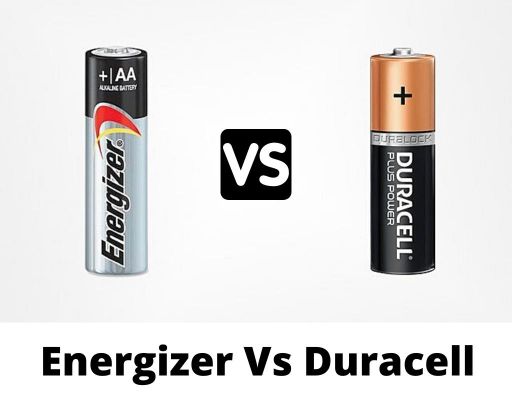In today’s automobiles, only roughly 7 different battery sizes are utilized. As a result, there aren’t many battery sizes to pick from. What causes confusion is that one battery size is typically referred to by two different names.
There are a few common differences between the 51R and 35 car batteries which are easy spot if you are familiar with them.
BCI Group 51R batteries are widely utilized as general-purpose or auxiliary batteries in a multitude of scenarios needing reliable and consistent forms of energy, including automobile ignition and dual-purpose batteries.
BCI Group 35 batteries are a common lead-acid battery size that are often used as starting or dual-purpose batteries in vehicles, trucks, RVs, and other related technologies.
What is a Group 51R Battery?
The BCI Group 51R batteries are meant to fit inside a conventional rectangular box measuring 9.374 x 5.0625 x 8.8125 inches (23.8 x 12.9 x 22 3 cm). This one-of-a-kind feature is ideal for large or older automobiles.
The vibration resistance of 51R batteries is one of their most notable properties.
This will keep the batteries in place while driving, even if the road becomes unexpectedly rough, which is ideal for individuals who lead an active lifestyle or frequently drive off-road.
Some batteries are engineered to be lighter in weight for a better fit. Group U1, a battery with a lower weight and capacity than Group 51, is an excellent example.
What is a Group 35 Battery?
Many automobiles and trucks use Group 35 batteries, which are medium-sized batteries. They have a 20-hour capacity in the 44-65 Ah range and deliver 620-850 CCA, 90-130 minutes RC.
The dimensions of the battery are: 9.06 inches in length, 6.87 inches in width, and 8.8 inches in height.
A Group 35 battery provides 40 hours of AMP hours, compared to 40 hours for a regular battery. There may be minor differences between manufacturing businesses.
The weight of a Group 35 battery varies depending on the manufacturer and brand. It may weigh anything from 16 to 50 pounds.
What Are the Differences Between A 51R and A 35 Car Battery?
The Group-35 Battery, also known as Q85, may be used with Group-24 but is 1-inch narrower. It’s common in Toyota, Nissan, Mitsubishi, Subaru, and Acura automobiles and cars, as well as some older American vehicles.
Hondas, Nissan GTRs, and a few other Japanese cars use the Group-51 battery. Because it has the similar length and height as the Group-35, but thinner front to back, it may be utilized as a reduction in the size for racing.
51R vs 35 Battery
| Features | 51R Battery | 35 Battery |
| Dimensions | 9.375” x 5.0625” x 8.75” Inches | 9.0625” x 6.9375” x 8.875” Inches |
| CCA Range | 310-500 | 300-640 |
| Post Terminal Types | Type A, A1, A2, and A3 | Type A, A1, A2, and A3 |
| Post Terminal Locations | SAE, DIN, EN, JIS, and JIST Pencil Post | SAE, DIN, EN, JIS, and JIST Pencil Post |
| Volts | 12v | 12v |
| Cells | 6 | 6 |
| Appearance |  |  |
Which Of The Group 51R Batteries are the Most Effective?
Your electrical equipment should be able to run for as long as possible with the finest 51R battery.
However, with so many various brands and types of batteries on the market, deciding which one is perfect for you can be difficult. These are some of the greatest group 51R batteries that you may find useful.
Product Suggestions:
The 12-volt battery has 450 cold cranking amps. 9 5/16″ x 5 1/16″ x 8 15/16″ are the measurements. For consistent functioning, the reserve capacity is 66 minutes.
Even in severe conditions, these batteries give excellent starting power. For durability, these are fifteen times more vibration tolerant.
The calcium alloy used in these batteries has been tuned to provide a fine grain, corrosion-resistant grid. It also extends battery life by reducing water consumption and increasing cycle life.
Internal resistance is reduced by the AGM Plate separators, resulting in considerable improvements in all performance indicators.
In Partial-State-Of-Charge, these improvements include higher cycling ability, faster recharge acceptance, and increased cranking power.
Which Of The Group 35 Batteries are the Most Effective?
It all relies on why you need a battery and what you want to do with it. It also varies depending where you live, how you drive your car, and the devices you utilize in your vehicle.
All of the group 35 batteries are quite popular and have number of customers. Here are some of the best group 35 batteries you can choose from.
Product Suggestion:
These batteries have a longer cold cranking amps rating, which implies they have greater power. These have a CCA of 680 and a reverse capacity of 100.
Some of the better advantages are the 20x vibration resistance and the ability to work in harsh temperatures.
These batteries additionally include strengthened posts, straps, and welds, as well as enhanced component compression.
The AGM design of Exide batteries makes them non-spillable. These have the potential to carry heavier weights as well.
They’re known for surpassing traditional batteries in a variety of tests, including stop-and-go traffic and strong electrical demands. At 25A, they have a 650 CCA and 110 minimum reverse capacity.
When Should You Replace the 35 or 51R Battery?
If the group 35 battery’s life is threatened by an underlying mechanical problem, you may simply resolve the problem to extend the battery’s life.
Battery rust can be removed, damaged cables or alternator parts may be replaced, and circuitry faults that deplete your battery can be located by your auto expert.
If you own a group 35 battery, keep an eye out for distinct warning indications that your battery is running out of juice.
Headlights that are dim or flickering, trouble starting or refusal to start, and a snapping noise out of a starter solenoid that isn’t receiving enough power are all indications of a starter solenoid that isn’t receiving enough power.
Conclusion
So, the group 51R and 35 has a few differences. If you require a group 51R or 35 batteries, you currently have a few options for long-lasting and reliable batteries.
There are a lot of manufacturers which are recognized for producing batteries that can withstand a variety of locations. They are capable of handling the latest electronics found in current American and Japanese automobiles.
As automotive technology progressed, so did the evolution of batteries. It’s vital to remember that each battery type has its own set of benefits and drawbacks, and you should only use the one designed for your car.
Related Posts:
- Differences Between F1 Vs F2 Battery Terminals?
- A Detailed Comparison On CR123A Vs CR123 Batteries
- Differences Between 12v Vs 12v AGM Battery
- Differences Between AA Vs D Batteries
- C4 Vs C8 Batteries: A Full Comparison
References:
- https://www.batteryequivalents.com/group-35-batteries-dimensions-features-and-recommendations.html
- https://www.driveaccord.net/threads/switch-size-35-battery-to-51r-and-save-10-lbs.72229/
- https://www.crvownersclub.com/threads/has-anyone-replaced-their-51r-with-a-larger-battery.208888/
- https://www.elementownersclub.com/threads/battery-size-guide-51r-56-47-35-34r-24f-other.126898/
- https://bobistheoilguy.com/forums/threads/upgrading-battery-51r-to-35n-24f-on-a-13-civic.306981/
- https://www.powerstream.com/car-battery-faq.htm


